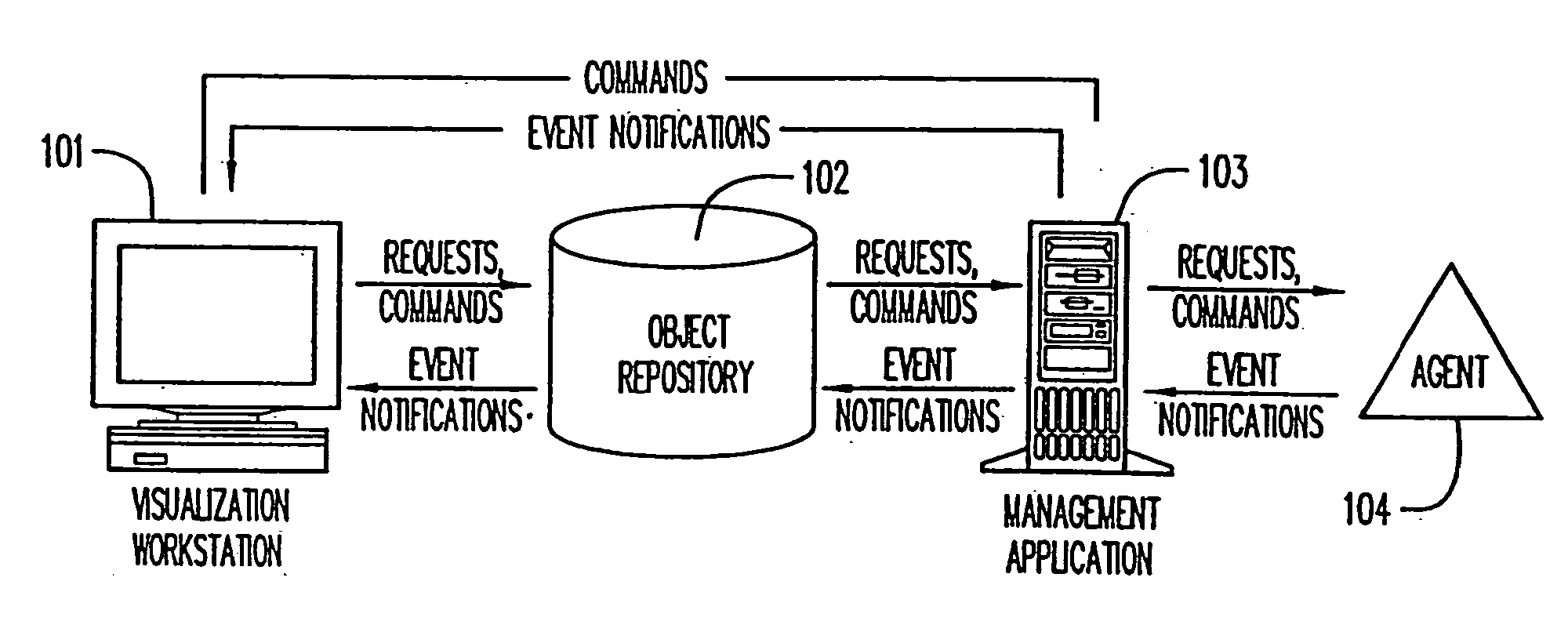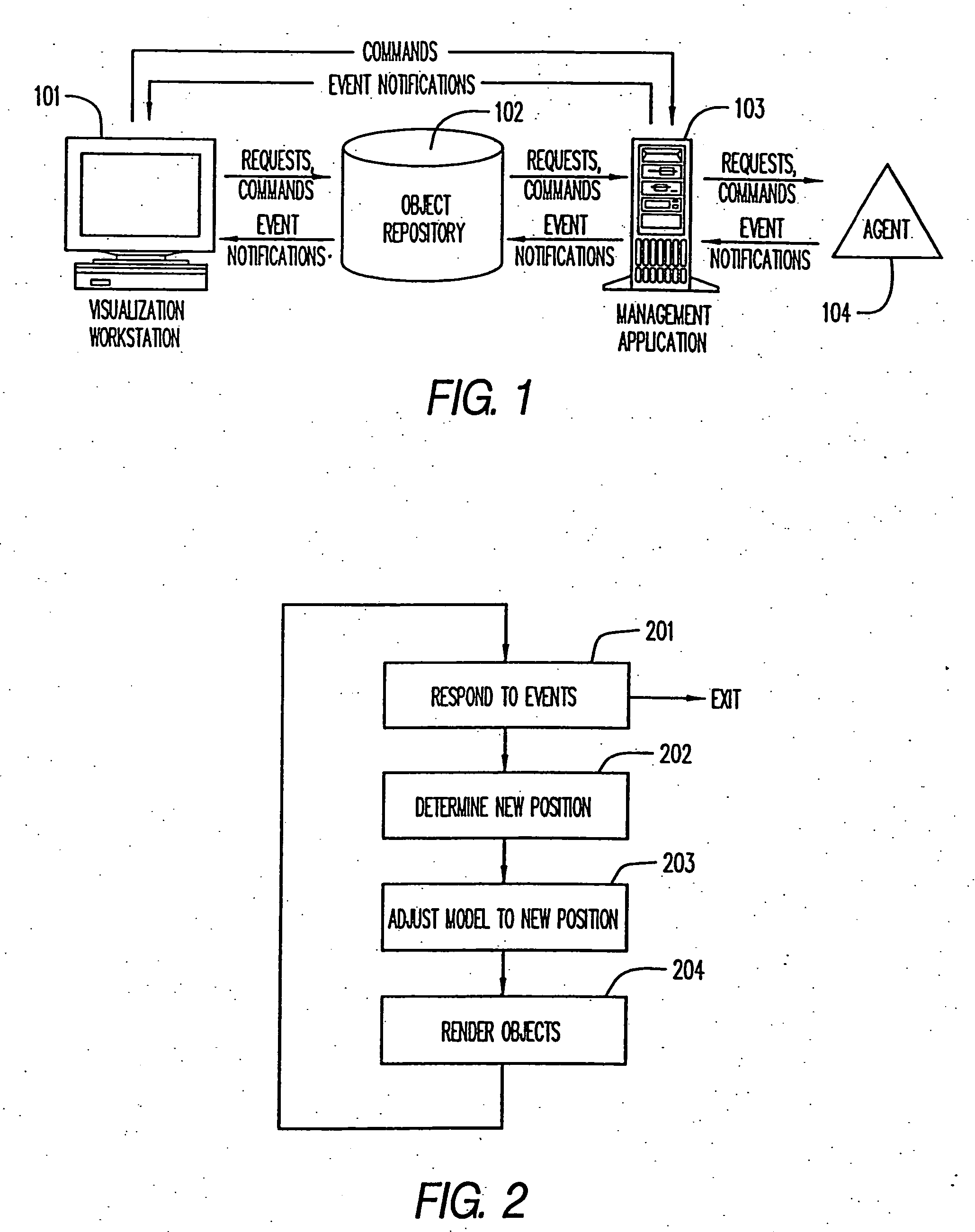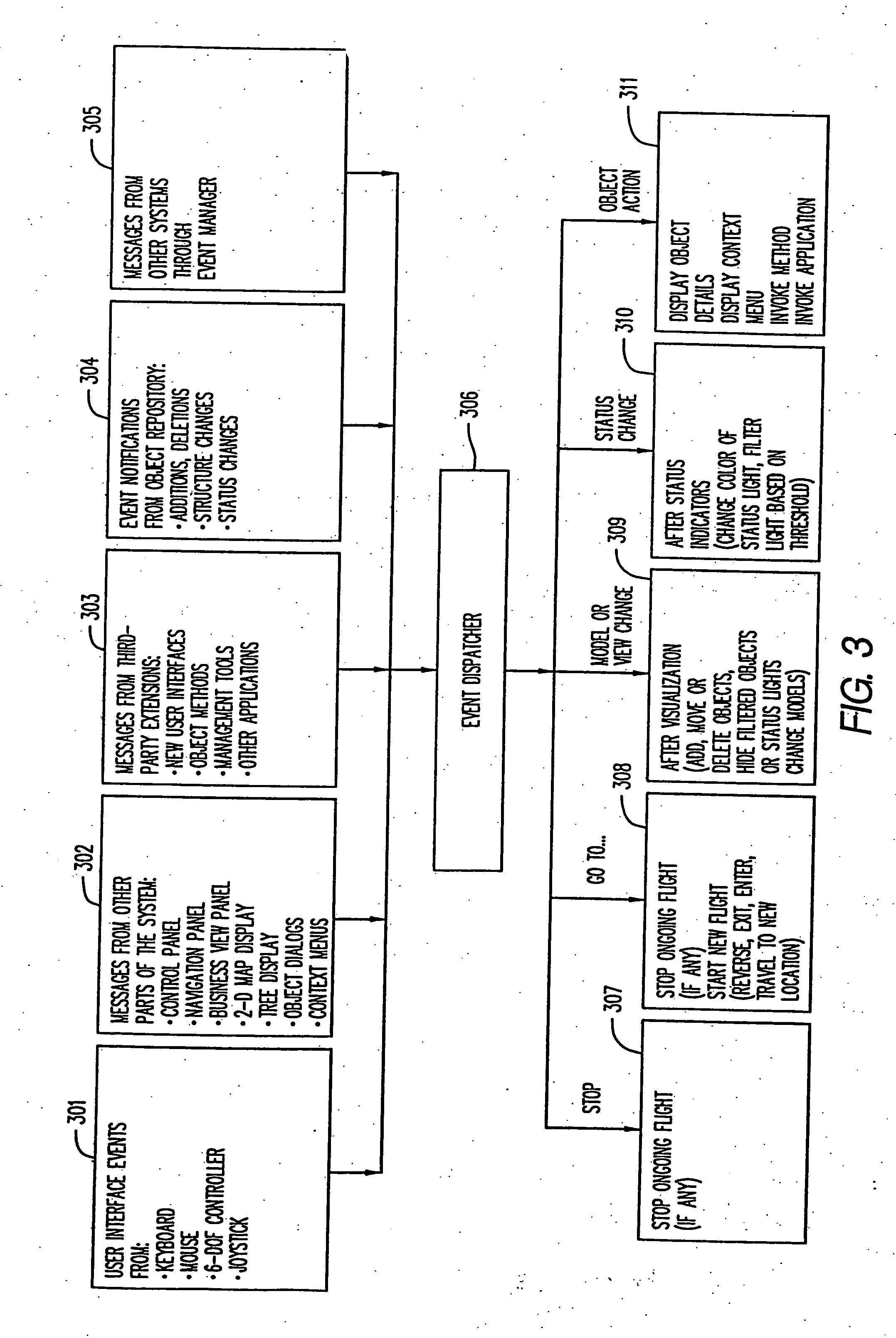Prior art systems were deficient generally for two reasons: first, limitations inherent in available user interfaces, and second, absence of open-architecture,
integrated systems effectively to manage and administer heterogeneous platforms using diverse operating systems for many different applications, including
information technology and
business management administration and to isolate views of specific business and management interests.
Each of the displayed categories of information works well but with critical limitations.
For example, the use of two dimensional lists is definitely limited by the number of units: as the number increases, the lists become effectively unmanageable by the user.
Further, the hierarchical systems can allow increased navigating ability but are again limited to a few thousand devices and by the fact that the only relationships that can be displayed are those within the hierarchy.
This is limited typically because the
tree structure is based on a single hierarchy; for example, it may be organized geographically and this will not allow display of units in multiple geographical locations that are a part of a particular business interest.
Even when using the folders-icon
system, although multiple hierarchies can be displayed, the user tends to be confused or is provided incomplete information by the limited amount of data that can be provided.
Although through certain enhancements, the
tree diagram / map system can improve on its effectiveness, such as by showing a
transmission line as green if it is functioning and red if it is not, it and the other prior art interface systems are still limited to several thousand units.
In the case of all of the aforementioned prior art systems discussed above, none can be effectively used in the modern environment in which it is not uncommon to have 10,000 computer devices to more than 100,000 such devices in a
networked system.
Further, the prior art systems limit the scope of the responsibility of the systems administrator.
As the number of units within a network system increases, the number of physical and logical relationships between the systems responsible for the various functions increases exponentially so it becomes very difficult, if not impossible, to manage the network system.
Even trained professionals cannot deal with the enormous numbers of relationships that must be monitored and managed in the complex systems.
; plus
software distribution tools, desktop asset management tools, help
desk and trouble-ticketing tools all had to be separately provided, and their compatibility constantly was problematic.
In such
large networks, administration became time-consuming and tedious because the system administration was in the same physical location as the
workstation.
Since these workstations are typically spread over a large areas such as a large, multi-story building, multiple cities, and even multiple countries, a significant amount of time and effort was spent in traveling between workstations to perform management tasks.
However,
client-
server application management was non-existent.
Client-
server users could only inefficiently, if at all, account for the assets within the system, determine what applications were on their networks, assess how those applications were performing, identify failures occurring in hardware or
software assets, and then diagnose and correct faults.
In part, because of these difficulties, planning for network growth also was a task that was difficult at best.
Unsuccessful attempts have been made to develop an end-to-end solution to provide real
time information about application health, administration, service level and performance.
Failures were hard to trace when the application management was not part of a system /
network management scheme.
However, in distributed environments, following the data flow is a complex task, since application and data go through many steps.
However, as systems became larger, more widespread, and more heterogeneous, prior to the present invention, there has been no acceptable method for a manager fully to comprehend either the network system or the assets relevant to a particular malfunctioning subsystem.
Conventional human interfaces, such as “trees” which displayed the structure of the network in text form, or simple icons, which represented parts of the system in two-dimensional form, were inadequate to provide a real-
time system overview, or subsystem overview to allow the administrator to envision a system, its malfunction, and the corrective action needed.
However, this common
user interface approach has several disadvantages.
It is also psychologically jarring, and interrupts the
work flow.
While such systems have several
usability advantages, they have not been able to represent the more complex structures that require graph diagrams, with interconnected nodes.
Each of these techniques has advantages, but none is good at handling one particular problem: following a trail of relationships in a very large and bushy graph.
The problem is common, and is characterized by a rapid fan-out of links.
Various prior-art
visualization techniques attempt to deal with the problem through nesting, filtering or
scrolling, but none is very successful.
 Login to View More
Login to View More  Login to View More
Login to View More 


